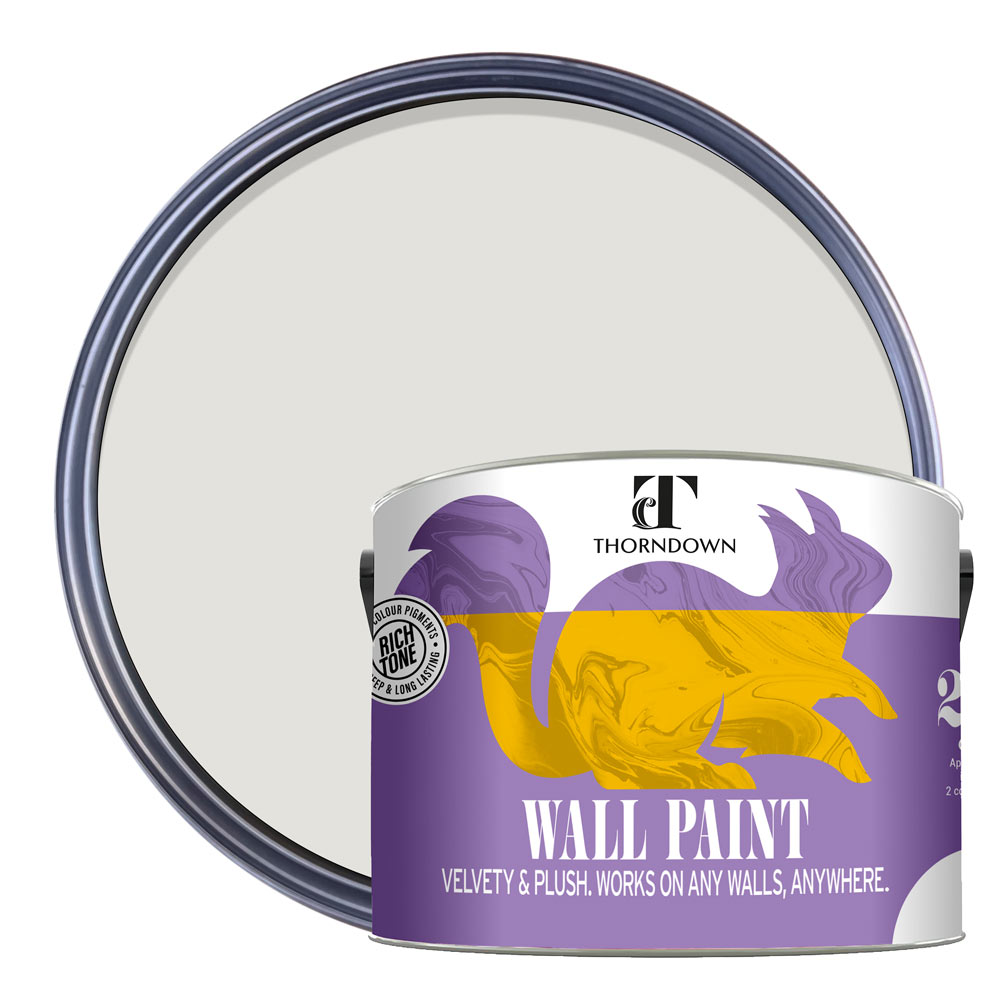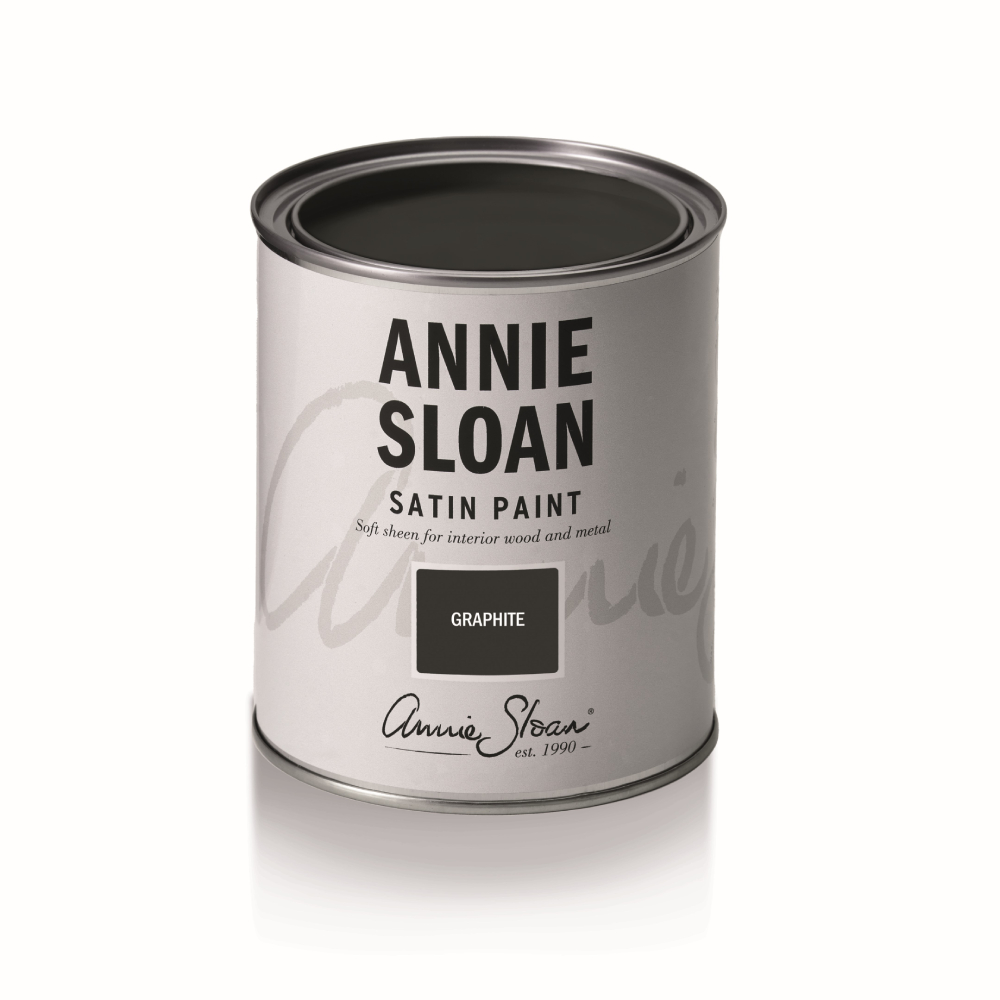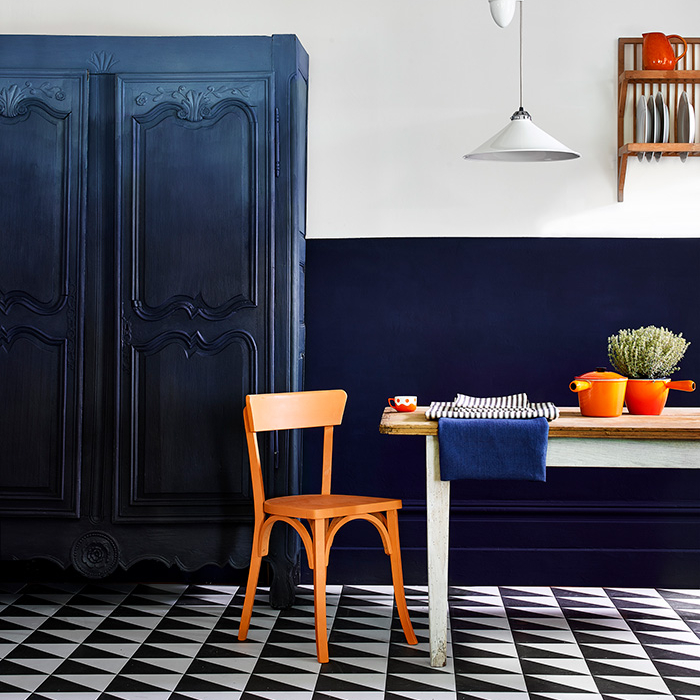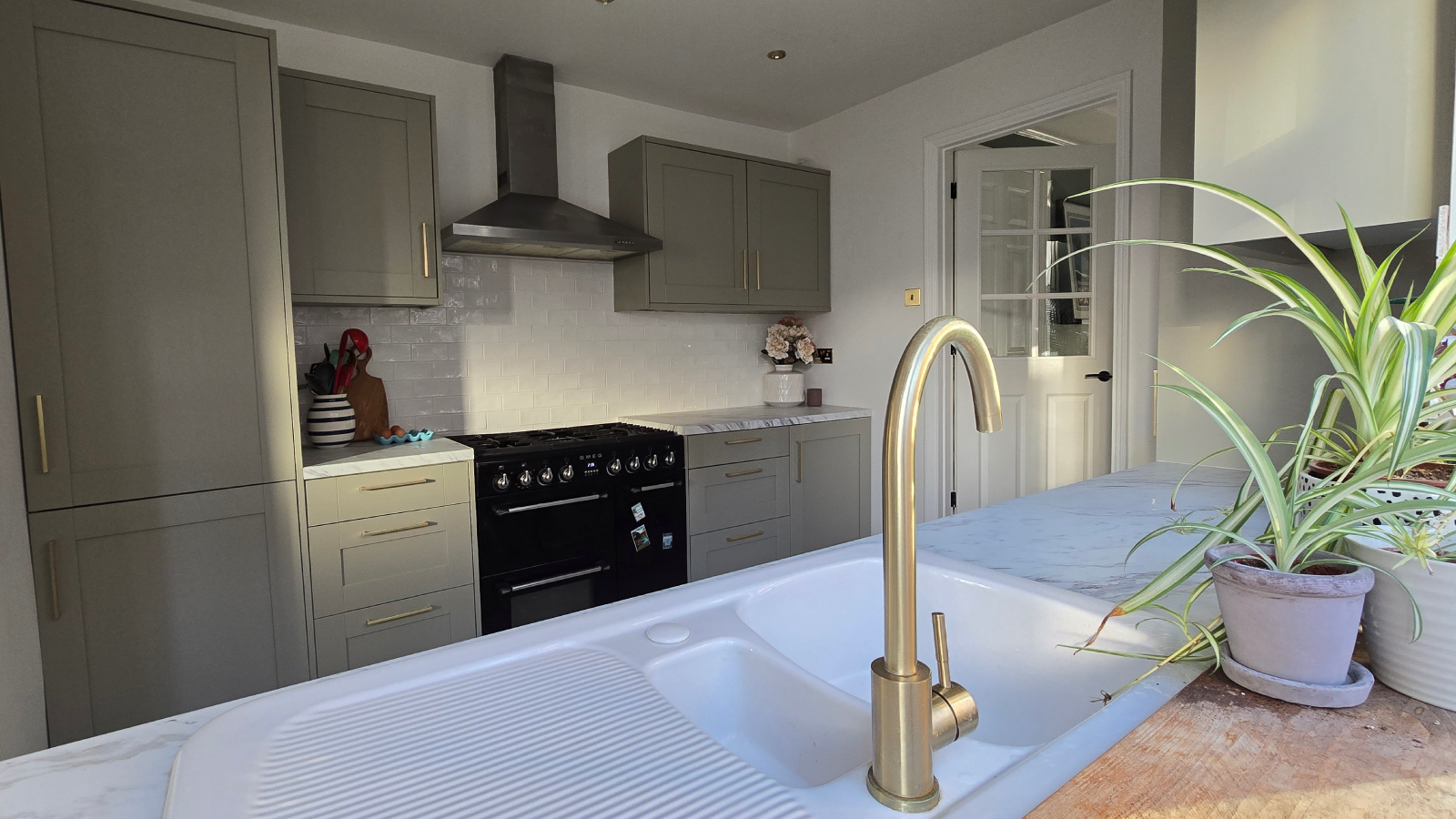Can you mix and match colours in a kitchen? Experts say yes — but only when you combine the right ingredients
Choosing colours for your new kitchen can be confusing. Should you mix and match colours in a kitchen or not? Experts say colour combinations are possible and here's how to get it right
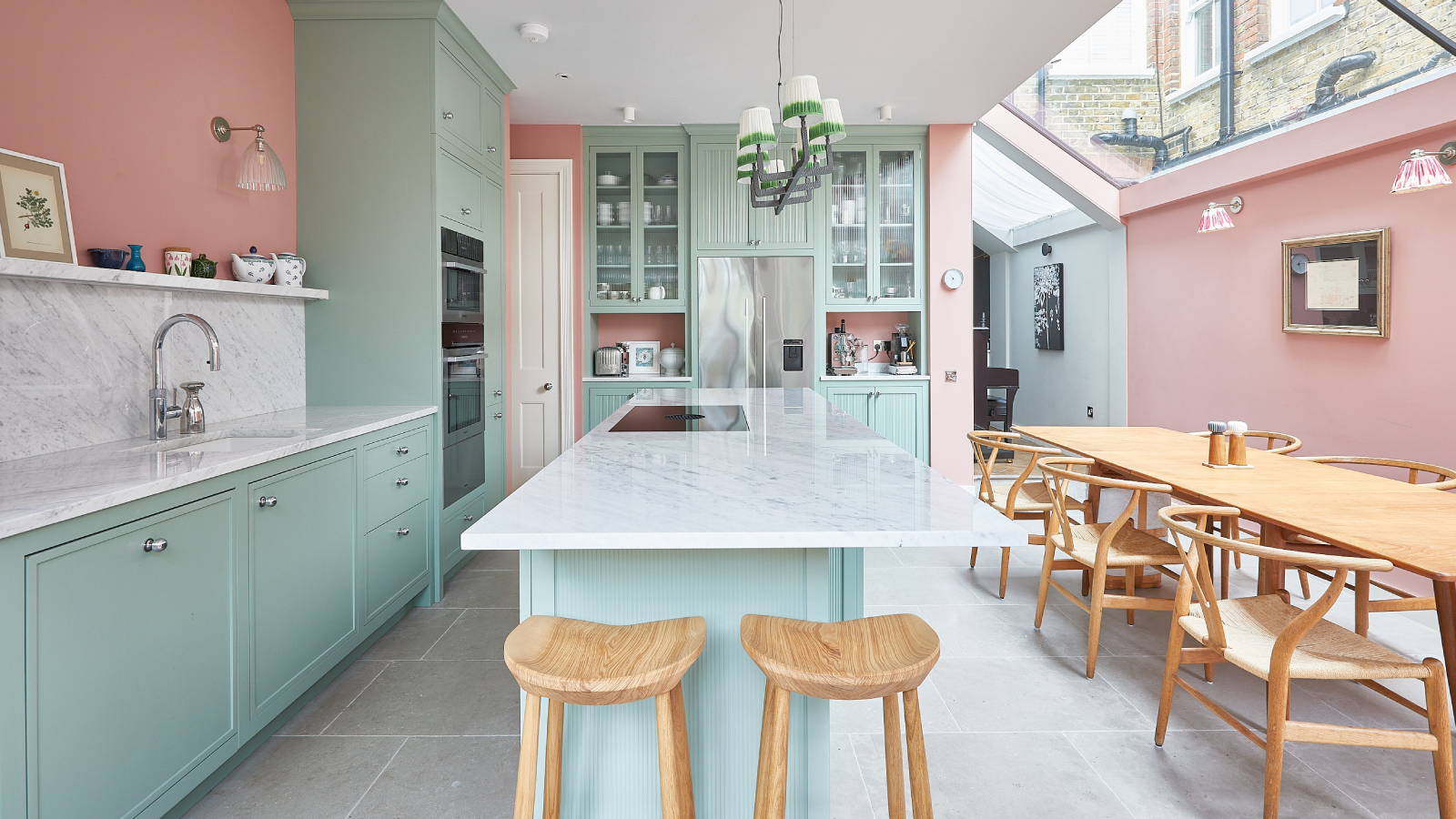
When it comes to choosing colours for your kitchen design, should you mix and match colours in a kitchen or is it better to opt for a uniform approach and use one colour across the whole scheme?
With colours capable of changing your perception of a space, as well as influencing the overall mood, getting them right in the heart of the home is essential in order to create a cooking space that's stylish, practical and welcoming.
We asked the experts should you mix and match colours in a kitchen or is it something that should never feature on your kitchen menu? Here's what they say are the perfect ingredients for a delectable finish.
What happens if you mix and match the wrong colours in a kitchen?
Although most of our experts agree you can mix and match colours in a kitchen – as you long as you follow the guidance below – there are some exceptions to the rule.
"Mixing and matching colours is a really impactful design approach when it comes to your kitchen ideas as it can create a really dynamic and eye-catching space that's full of personality," says Nathan Kingsbury, creative director at Nathan Kingsbury Design. "That being said, it does require careful thought and consideration to ensure you create a balanced and cohesive scheme.
"A balanced mix of colours can add character and prevent your kitchen from feeling monotonous, but mismatched or overly clashing colours can have the opposite effect, making your kitchen feel unorganised," adds Nathan.
"Be careful not to use too many competing colours as this can make the kitchen feel chaotic, cramped and difficult to live with," he warns. "Bold colours like red, orange or bright yellow can bring energy to the kitchen, but are also best used sparingly to avoid overwhelming the space."
Bring your dream home to life with expert advice, how to guides and design inspiration. Sign up for our newsletter and get two free tickets to a Homebuilding & Renovating Show near you.


Nathan has over 20 years experience in the kitchen industry. For Nathan, designing kitchens is more than just a business; it’s a vocation and passion. He is a natural artist with an inventive, engineering mind, a trained craftsman with a precise eye for detail and a perfectionist with an honest and attentive nature.
How to mix and match colours in a kitchen
If you're planning on upgrading your home with a new kitchen extension idea or are in the process of designing your new self build home, investing in your new kitchen costs will likely take up a substantial chunk of your budget. So, how do you make sure your colour choices don't leave you filled with regret?
"Be wary of overly clashing or highly saturated combinations, like too many primary colours together, which may make the space feel chaotic," advises Molly Chandler, designer at Willis & Stone. "I would always advise keeping the palette cohesive for a polished look," she says.
But what does cohesive mean when it comes to mixing and matching colours in a kitchen? It's similar to how you approach colour choices across your home says Nathan Kingsbury.
"It's advisable to stick to a cohesive palette of three colours for balance - one dominant colour, one secondary colour and a third accent," he explains, adding that, "the key is to use complementary colours whilst considering the overall size of the space and the mood and feeling you want to create."
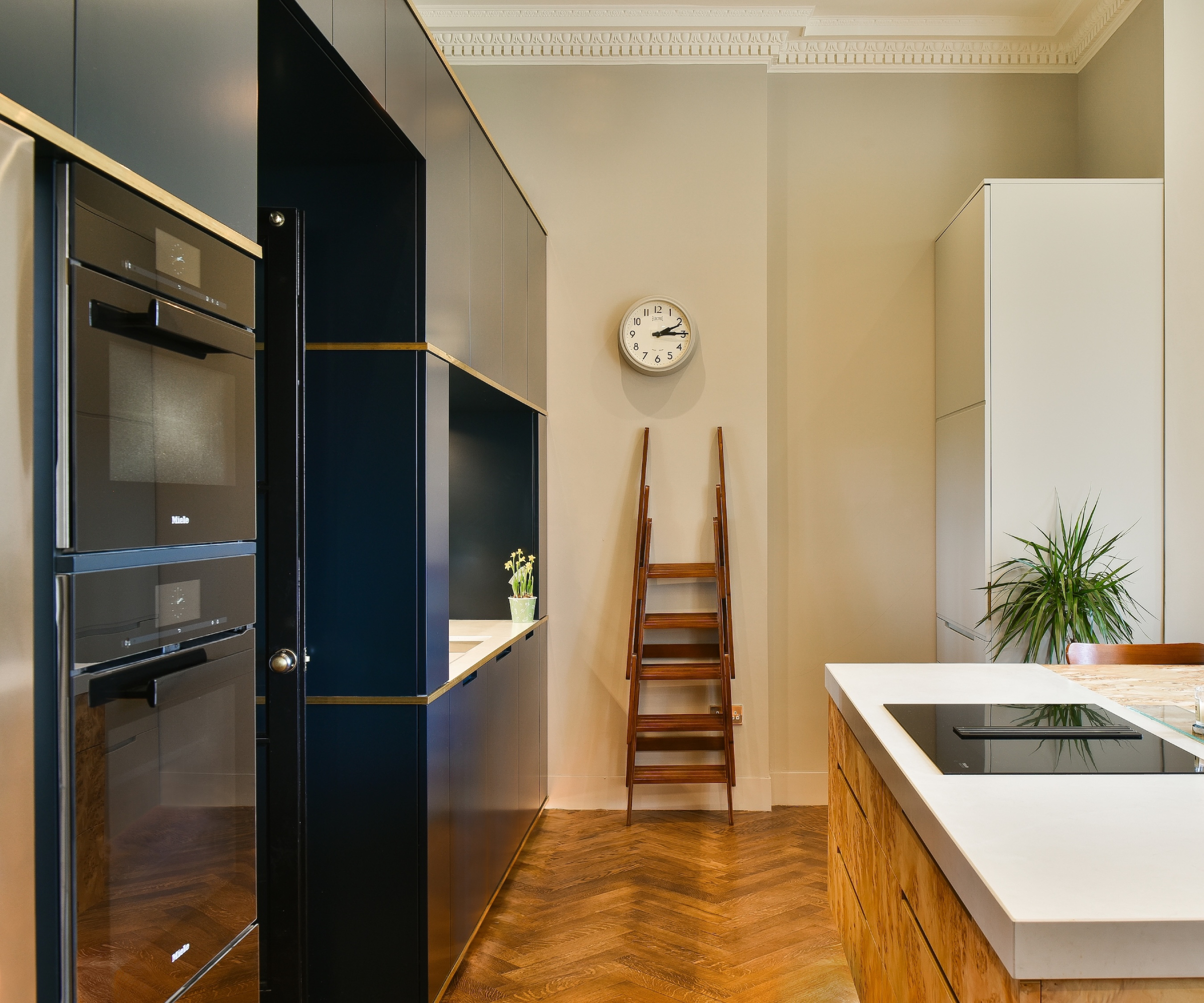
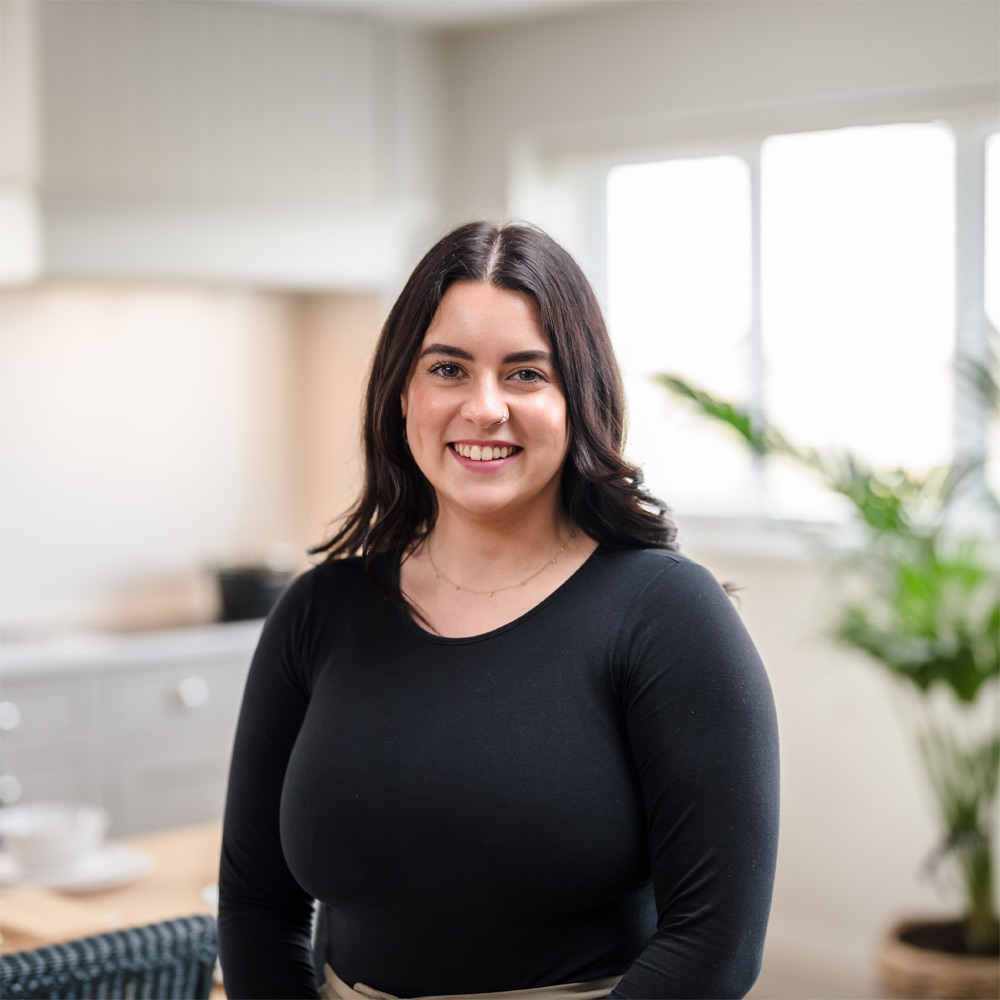
Molly Chandler is a designer with a wealth of experience in creating quality kitchens to suit a wide variety of customer needs. From initial idea through to completed design, Molly understands just how to make a kitchen perform both an aesthetic and practical level.
Which colours mix and match well in a kitchen?
Choosing the right colour combinations in your kitchens seems to come down to some basic rules. Get the base layer right and the rest of your colour choices can be partly influenced by your own personal colour preferences and suggestions from our experts.
"When mixing colours in a kitchen, it’s essential to strike a balance between complementary and contrasting tones," says Kate Palmer, creative director at The Painted Furniture Company. "Neutral bases like white, beige or soft grey work well as a foundation and pair beautifully with pops of bold colours such as navy blue, forest green or deep reds for furniture, walls or backsplashes."
"Muted tones, such as sage green or dusty blue, lend a timeless, sophisticated feel," suggests Molly Chandler, "while black and deep charcoal create striking contrasts when paired with lighter hues."
So why is a neutral base colour still a good idea, even if you contrast it with a stronger shade?
"Neutrals work well as base colours because they provide a clean canvas that you can add accent colours to with ease, and change easily," says Nathan Kingsbury. "For instance, pairing white or grey cabinets on the perimeter with a kitchen island idea in a deep navy or forest green will create contrast whilst maintaining a harmonious look."
But it's not just about following paint trends or kitchen trends. It's also about making the most of the space and using the right colours to create the mood you want.
"Mixing colours in a kitchen can have several effects on the perception of space and overall ambiance, depending on how the colours are used," says Molly. "Light and neutral colours tend to make a kitchen feel larger and more open by reflecting light and creating an airy atmosphere. Monochromatic colour schemes also create a sense of space, while on the other hand, dark or bold colours can make the space feel cosier and more intimate. But, if overused, they might make a small kitchen feel cramped or heavy."
Start by considering what you want to use your kitchen for. Is it a large kitchen diner where the family congregate to eat and perform tasks such as homework in which case lighter shades will help to add a fresh and invigorating feel. Or, perhaps you are out of the house most days and instead use your kitchen as an evening entertaining space meaning darker, richer tones will enhance the mood.
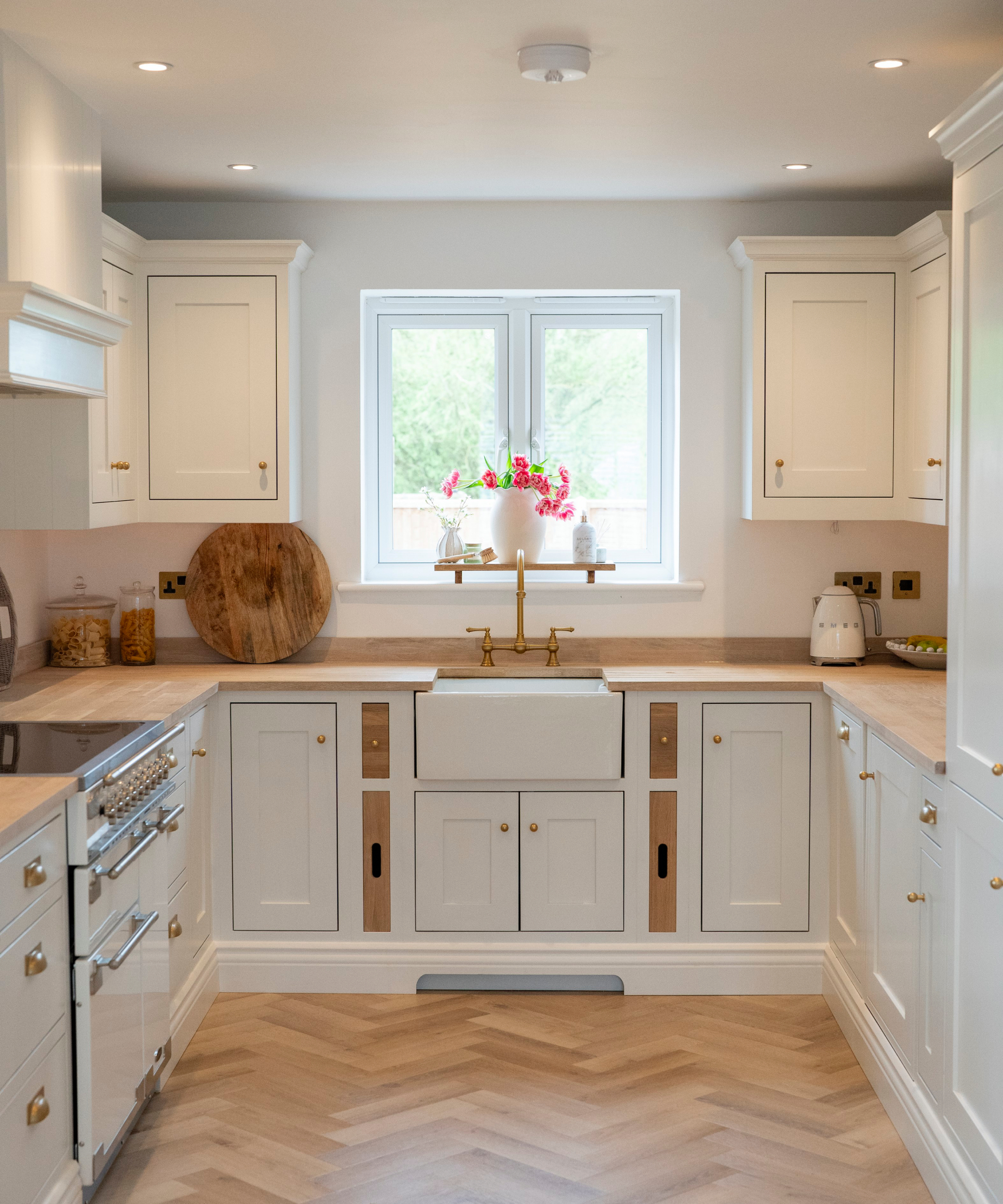
Shop these paint colours for your mix and match scheme

Kate Palmer is the creative director at The Painted Furniture Company. With a background in fashion design and passion for colour and interiors, Kate has helped many customers to achieve the exact look they desired for their home.
Where to mix and match colours in a kitchen
Choosing where to mix and match colours is of course as important as the colour choices themselves, say our experts."Mixing and matching colours works best when done thoughtfully in specific areas to avoid overwhelming the kitchen," says Molly Chandler.
"Contrasting colours, like pairing light cabinets with dark countertops, is a popular choice, as is using contrasting or complementary colours on cabinets and walls.
"A darker colour on lower cabinets paired with lighter upper cabinets or walls can draw the eye upward, making the space feel balanced and open. Similarly, a bold accent colour can be reserved for the kitchen island or a backsplash," suggests Molly, "while the rest of the kitchen remains neutral, allowing the accent to stand out without overpowering the space.
"It's also effective to limit colour contrasts to specific zones, like pairing neutral tones on larger surfaces with pops of colour in smaller areas," she adds.
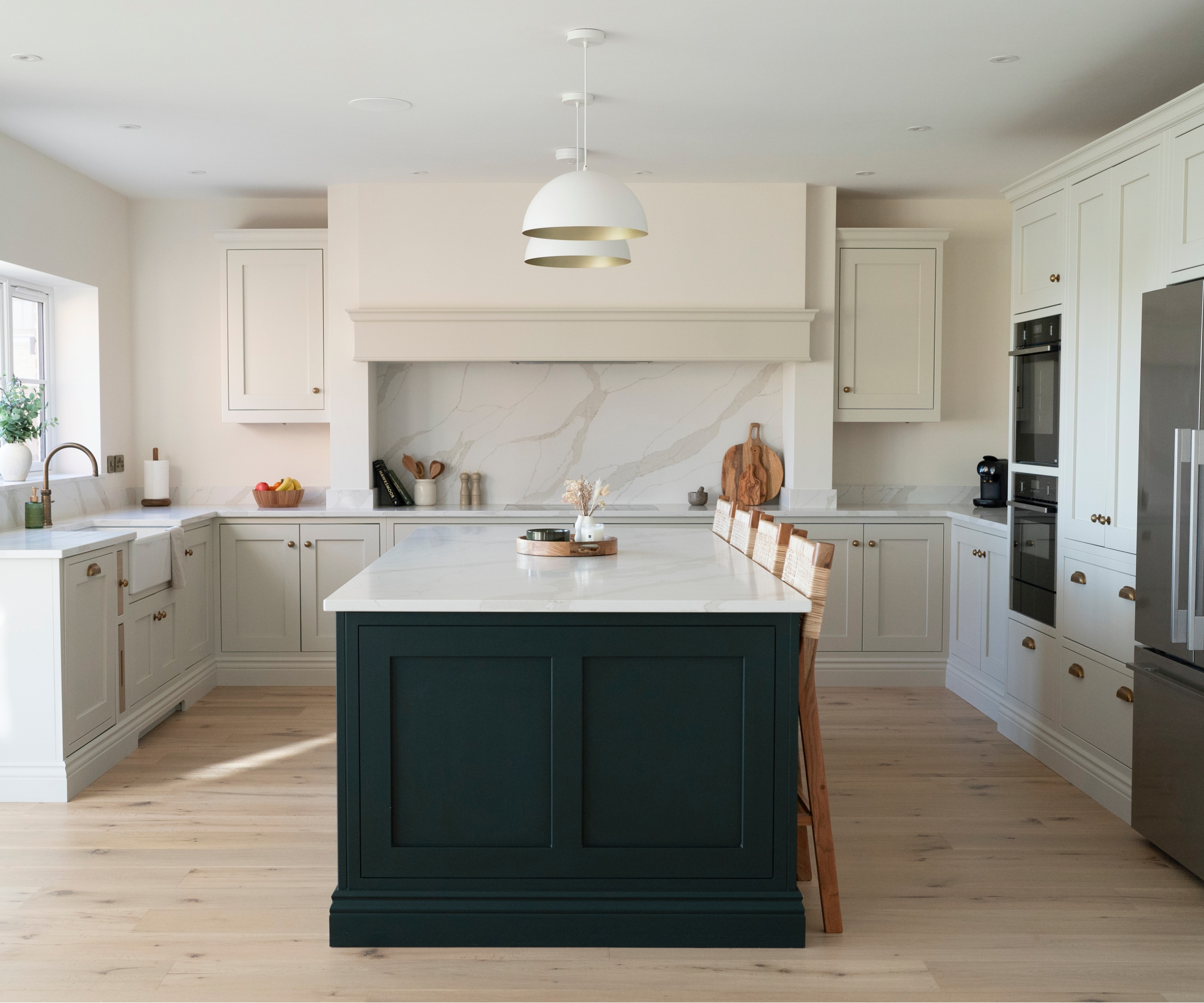
Mixing colours also allows for versatility, says Kate Palmer, letting your own personality shine through into your kitchen. "Incorporate elements like bold freestanding dressers, colourful appliances or opt for colourful kitchen decor ideas such as vibrant dishware," she says in order to add character without overwhelming the room.
Not sure where to start with choosing your colours? Using kitchen design apps could be a good place to experiment before you commit to the final design and choose the right places to start with different colour combinations.
"The cabinets and walls are the ideal place to experiment with a mix and match colour scheme as they dominate the visual space in the kitchen," says Nathan Kingsbury. "For example, you could opt for dark lower cabinets and light uppers to create a sense of depth and height, whilst contrasting wall colours can help to add definition in open-plan layouts."
And don't forget to use colour as a way of drawing attention to the overall room, says Kate Palmer. Noting how, "combining different hues – like soft neutrals with bold accents or contrasting tones on furniture and walls – can also help to highlight architectural features."
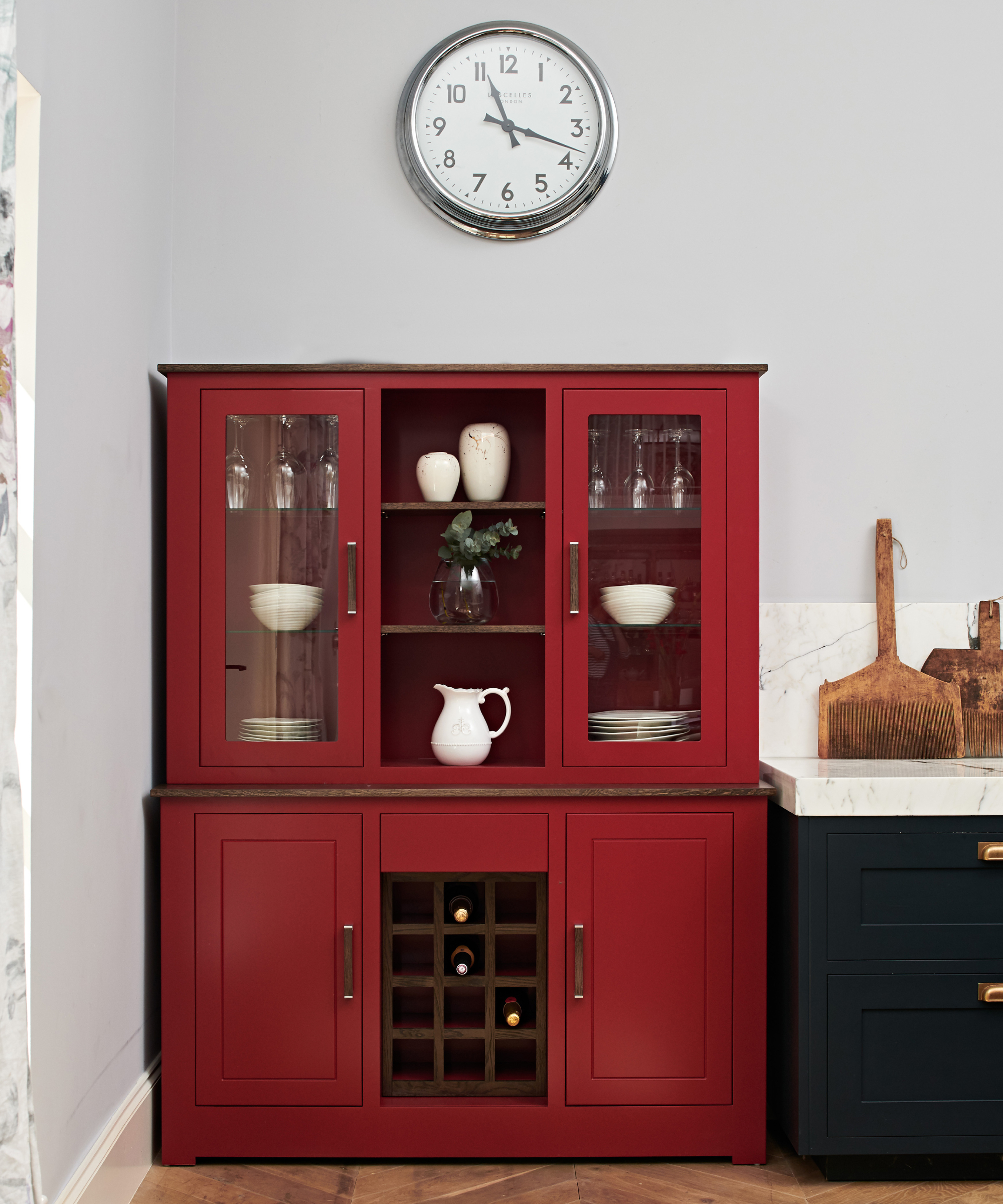
Our expert's final top tip when it comes to whether you mix and match colours in a kitchen? Don't get too carried away so you lose sight of the overall vision.
"Remember to be strategic with your colour placement," says Nathan Kingsbury. "Emphasising an island or open shelving with bolder colours will ensure the different colours draw the attention to the kitchen's best features, without taking away from the overall design scheme."
Looking for more inspiration on kitchen colour ideas? Try these navy kitchen ideas on for size and if you're undertaking a kitchen renovation, our painted kitchen cabinet ideas will be a great source of options.

Sarah is Homebuilding & Renovating’s Assistant Editor and joined the team in 2024. An established homes and interiors writer, Sarah has renovated and extended a number of properties, including a listing building and renovation project that featured on Grand Designs. Although she said she would never buy a listed property again, she has recently purchased a Grade II listed apartment. As it had already been professionally renovated, she has instead set her sights on tackling some changes to improve the building’s energy efficiency, as well as adding some personal touches to the interior.
